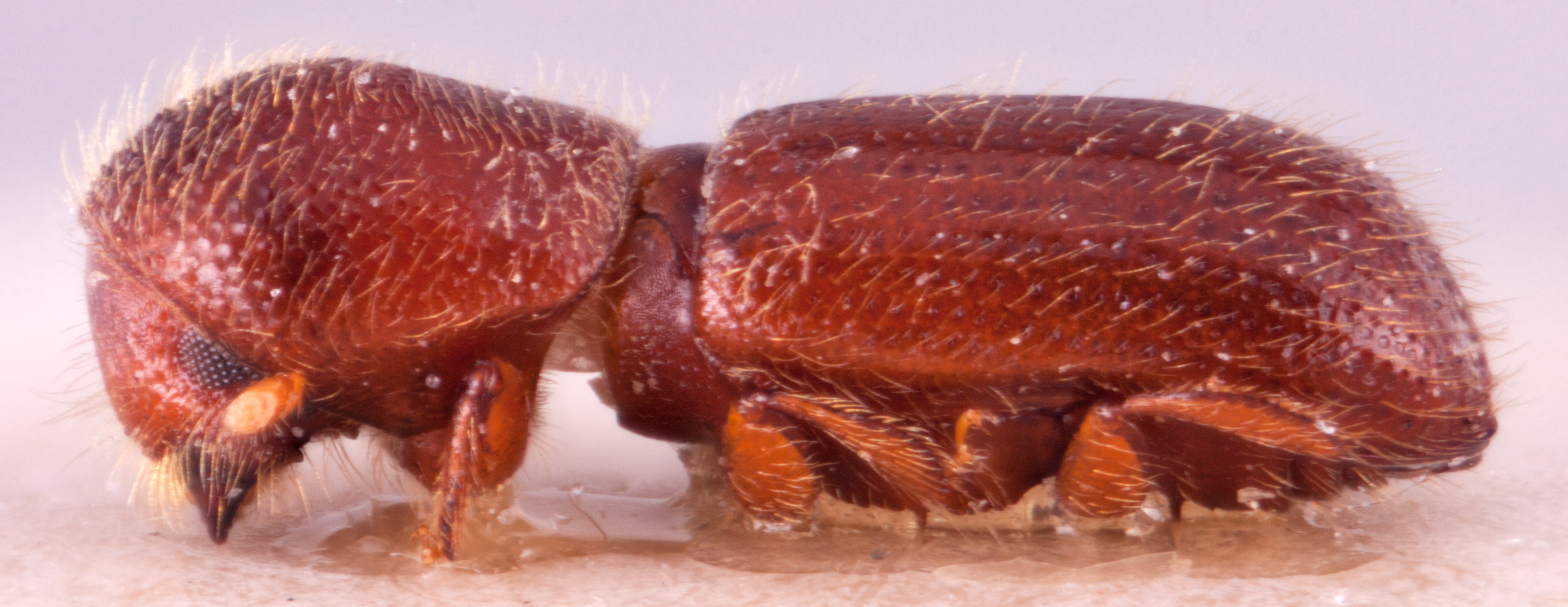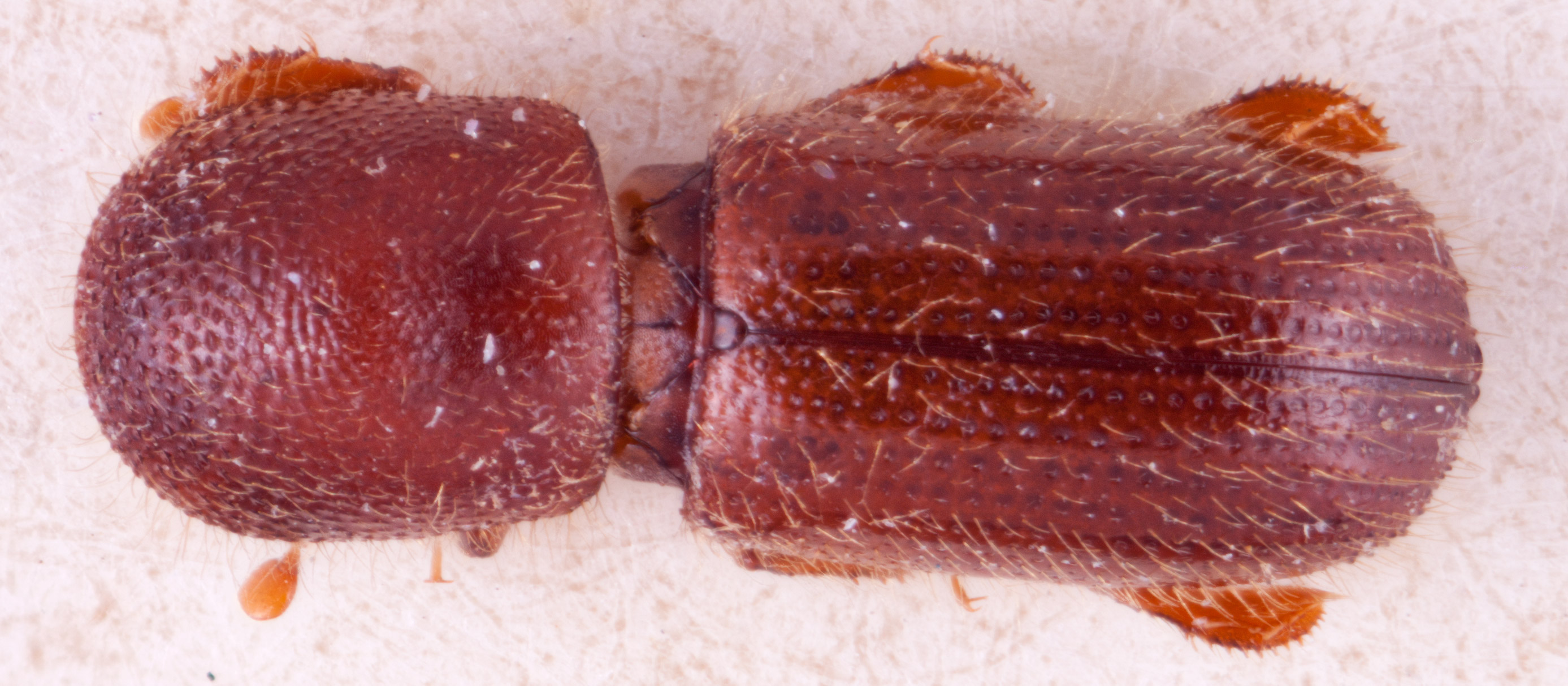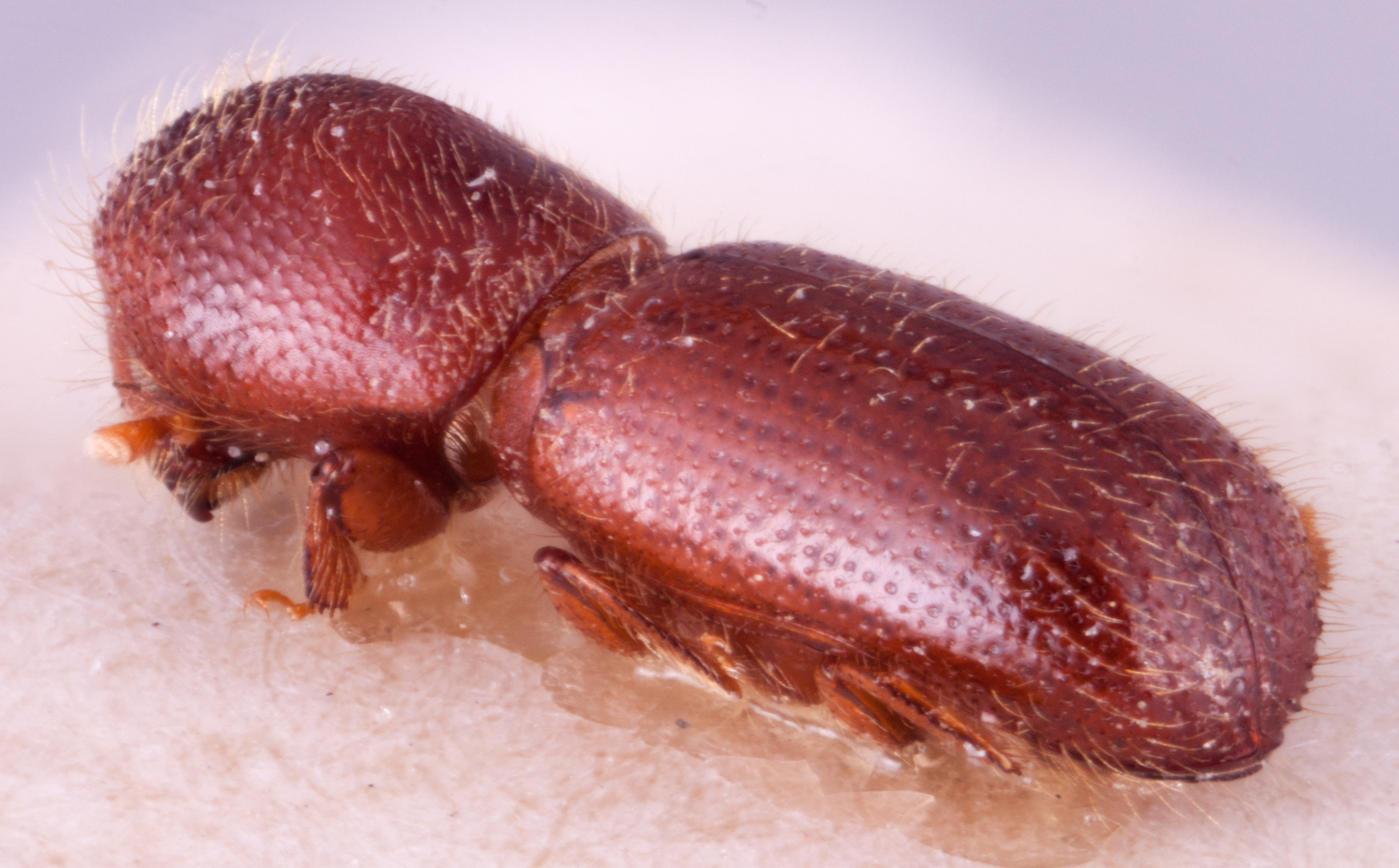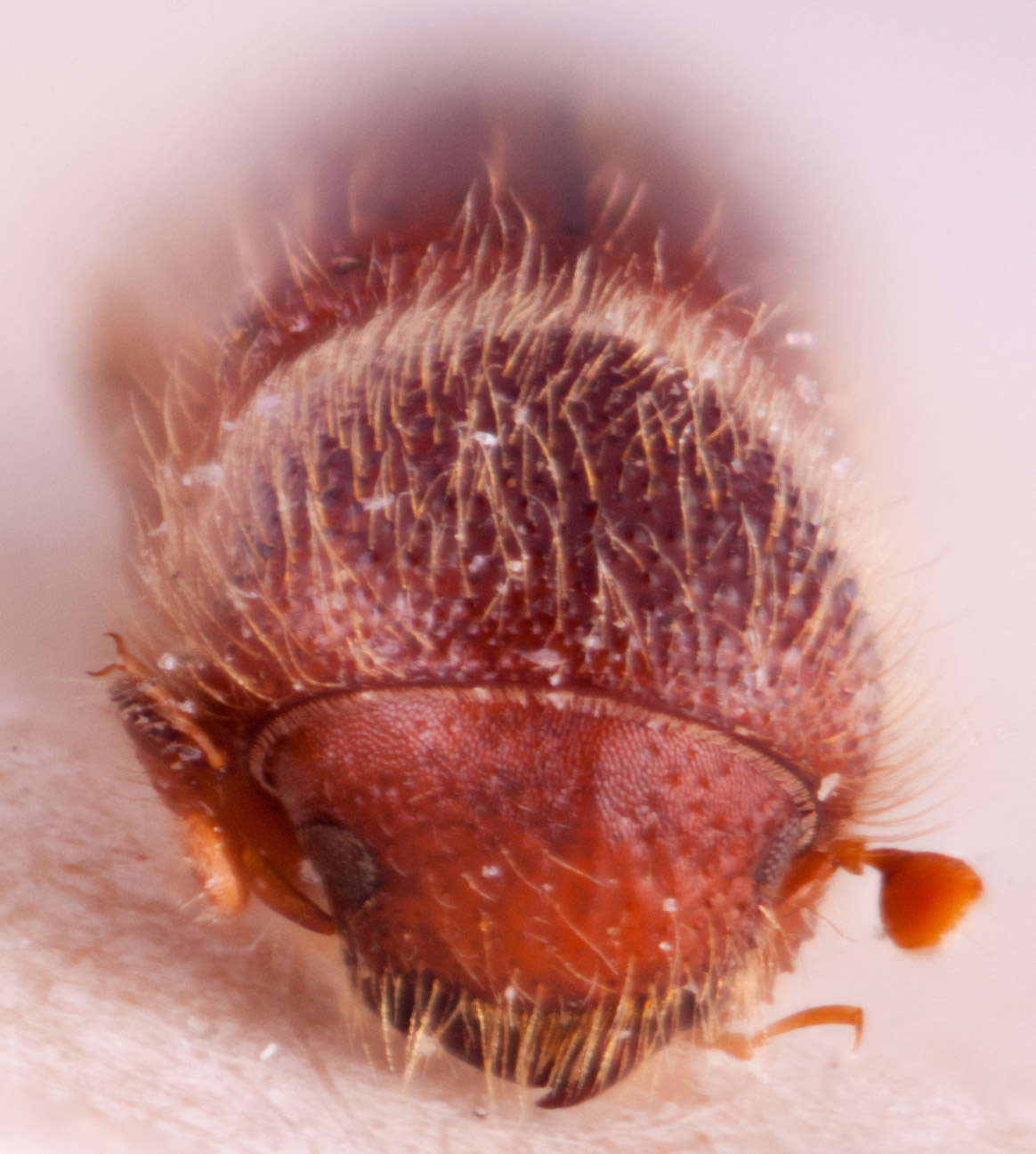Xyleborus muticus
|
Xyleborus muticus (Xyleborus conditus holotype) lateral; R.K. Osborn |
|
Xyleborus muticus (Xyleborus conditus holotype) dorsal; R.K. Osborn |
|
Xyleborus muticus (Xyleborus conditus holotype) declivity; R.K. Osborn |
|
Xyleborus muticus (Xyleborus conditus holotype) frontal; R.K. Osborn
|
Taxonomic history
Xyleborus muticus Blandford, 1894: 112.
Synonyms
Xyleborus lignographus Schedl, 1953c: 28. Smith et al. 2020b: 372.
Xyleborus conditus Schedl, 1971b: 379. Smith et al. 2020b: 372.
Diagnosis
3.00−3.10 mm long (mean = 3.08 mm; n = 4); 2.72−2.82 times as long as wide. This species is distinguished by the antennalantennal:
pertaining to the antennae
club distinctly broader than tall; protibiaprotibia:
'tibia of the first pair of legs
with evenly rounded outer edge; elytralelytral:
'pertaining to the elytra
posterolateral costacosta:
elevated ridge that is rounded at its crest, not necessarily with sharp appearance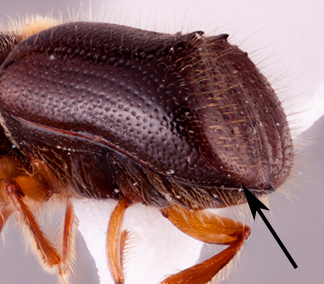 absent, replaced by a short row of tubercles; elytralelytral:
absent, replaced by a short row of tubercles; elytralelytral:
'pertaining to the elytra
declivitydeclivity:
downward slope of either the pronotum or elytra
 lightly shagreenedshagreened:
lightly shagreenedshagreened:
covered with a closely-set roughness, like shark skin'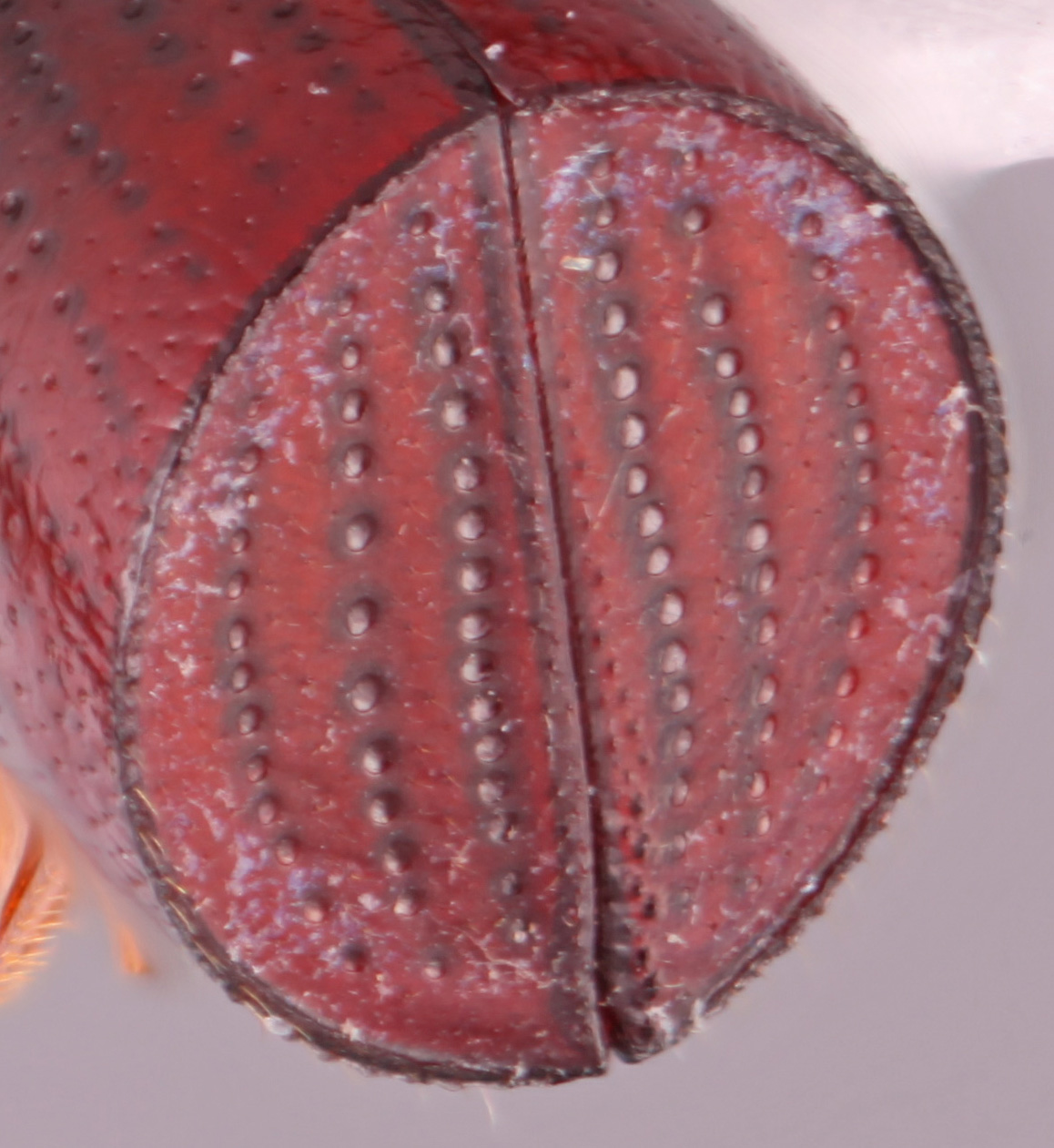 , strial punctures large, deep, and distinct; discaldiscal:
, strial punctures large, deep, and distinct; discaldiscal:
pertaining to the disc of either the pronotum or elytra
interstrial setaeseta:
small hair-like or scale-like structure
uniseriate.
May be confused with
Distribution
China (Fujian, Sichuan), India (Uttar Pradesh), Japan, South Korea, Nepal, Vietnam
Host plants
This species has been recorded from Quercus (Fagaceae) and Prunus (Rosaceae) (Murayama 1954Murayama 1954:
Murayama J. 1954. Scolytid fauna on the northern half of Honshu with a distribution table of all the scolytid-species described from Japan. Bulletin of the Faculty of Agriculture, Yamaguti University 5: 149-212.).
Remarks
Wood and Bright (1992) erroneously reported this species from ‘Pinus maximowiczii’. Murayama (1954) reported the species from Prunus maximowiczii, Korean cherry, thus the record from Pinus is incorrect.
DNA data
specimens not available for sequencing

